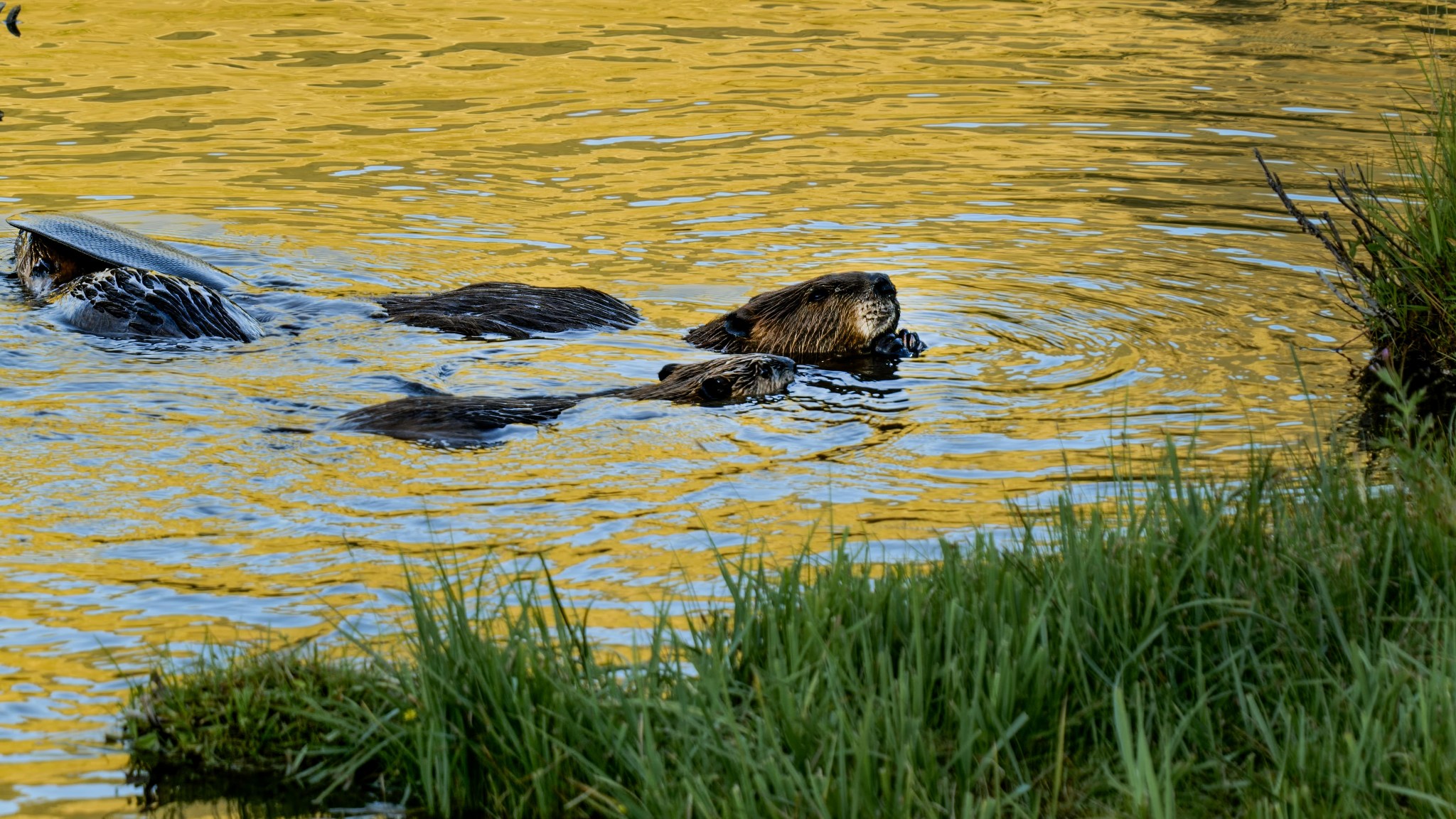Medals of Freedom are displayed Thursday, July 7, 2022, before a ceremony at the White House. (Official White House Photo by Cameron Smith) President Joe Biden will present Dr. Ellen Ochoa, former center director and astronaut at the agency’s Johnson Space Center in Houston, and Dr. Jane Rigby, senior project scientist for NASA’s James Webb Space Telescope, each with the Presidential Medal of Freedom Friday in a ceremony at the White House in Washington. The Presidential Medal of Freedom is the nation’s highest civilian honor award, and these two NASA…
Read MoreTag: Goddard Space Flight Center
2024 Total Solar Eclipse: Prediction vs. Reality
2 min read 2024 Total Solar Eclipse: Prediction vs. Reality Image Before/After Before a total solar eclipse crossed North America on April 8, 2024, scientists at Predictive Science Inc. of San Diego aimed to foresee what the Sun’s outer atmosphere, the corona, would look like during totality. The predictions help researchers understand the accuracy of their models of the Sun’s corona, which extends along its magnetic field. A solar eclipse offers a rare opportunity to view the entire corona from Earth, guiding research into how its energy can cause solar…
Read MoreNASA’s Hubble Pauses Science Due to Gyro Issue
2 min read NASA’s Hubble Pauses Science Due to Gyro Issue The Hubble Space Telescope as seen from the space shuttle Atlantis (STS-125) in May 2009, during the fifth and final servicing of the orbiting observatory. NASA NASA is working to resume science operations of the agency’s Hubble Space Telescope after it entered safe mode April 23 due to an ongoing gyroscope (gyro) issue. Hubble’s instruments are stable, and the telescope is in good health. The telescope automatically entered safe mode when one of its three gyroscopes gave faulty readings.…
Read MoreNASA’s ORCA, AirHARP Projects Paved Way for PACE to Reach Space
It took the Plankton, Aerosol, Cloud, ocean Ecosystem (PACE) mission just 13 minutes to reach low-Earth orbit from Cape Canaveral Space Force Station in February 2024. It took a network of scientists at NASA and research institutions around the world more than 20 years to carefully craft and test the novel instruments that allow PACE to study the ocean and atmosphere with unprecedented clarity. In the early 2000s, a team of scientists at NASA’s Goddard Space Flight Center in Greenbelt, Maryland, prototyped the Ocean Radiometer for Carbon Assessment (ORCA) instrument,…
Read MoreNASA Data Helps Beavers Build Back Streams
2 min read Preparations for Next Moonwalk Simulations Underway (and Underwater) A beaver family nibbles on aspen branches just up Logan Canyon from Utah State University, in Spawn Creek, Utah. Credit: Sarah Koenigsberg Humans aren’t the only mammals working to mitigate the effects of climate change in the Western United States. People there are also enlisting the aid of nature’s most prolific engineers – beavers. Using NASA-provided grants, two open-source programs from Boise State University in Idaho and Utah State University in Logan are making it possible for ranchers, land…
Read MoreHubble Captures a Bright Galactic and Stellar Duo
2 min read Hubble Captures a Bright Galactic and Stellar Duo This image from the NASA/ESA Hubble Space Telescope features the barred spiral galaxy NGC 3783. ESA/Hubble & NASA, M. C. Bentz, D. J. V. Rosario This image from the NASA/ESA Hubble Space Telescope features NGC 3783, a bright barred spiral galaxy about 130 million light-years from Earth that also lends its name to the eponymous NGC 3783 galaxy group. Like galaxy clusters, galaxy groups are aggregates of gravitationally bound galaxies. Galaxy groups, however, are less massive and contain fewer members than galaxy…
Read MoreNASA’s TESS Returns to Science Operations
2 min read NASA’s TESS Returns to Science Operations NASA’s TESS (Transiting Exoplanet Survey Satellite) has returned to work after science observations were suspended on April 8, when the spacecraft entered into safe mode. All instruments are powered on and, following the successful download of previously collected science data stored in the mission’s recorder, are now making new science observations. Analysis of what triggered the satellite to enter safe mode is ongoing. The TESS mission is a NASA Astrophysics Explorer operated by MIT in Cambridge, Massachusetts. Launched in 2018, TESS…
Read MoreAstronauts To Patch Up NASA’s NICER Telescope
4 min read Astronauts To Patch Up NASA’s NICER Telescope NASA is planning to repair NICER (Neutron star Interior Composition Explorer), an X-ray telescope on the International Space Station, during a spacewalk later this year. It will be the fourth science observatory in orbit serviced by astronauts. In May 2023, scientists discovered that NICER had developed a “light leak.” Unwanted sunlight was entering the instrument and reaching the telescope’s sensitive detectors. While the team took immediate steps to mitigate the impact on observations, they also began thinking about a potential…
Read MoreThe April 8 Total Solar Eclipse: Through the Eyes of NASA
5 Min Read The April 8 Total Solar Eclipse: Through the Eyes of NASA A total solar eclipse is seen in Dallas on April 8, 2024. A total solar eclipse swept across a narrow portion of the North American continent from Mexico’s Pacific coast to the Atlantic coast of Newfoundland, Canada. A partial solar eclipse was visible across the entire North American continent along with parts of Central America and Europe. Credits: NASA/Keegan Barber On April 8, 2024, the Moon’s shadow swept across North America, treating millions to a breathtaking…
Read MoreHubble Spots a Galaxy Hidden in a Dark Cloud
2 min read Hubble Spots a Galaxy Hidden in a Dark Cloud This Hubble image features the spiral galaxy IC 4633. ESA/Hubble & NASA, J. Dalcanton, Dark Energy Survey/DOE/FNAL/DECam/CTIO/NOIRLab/NSF/AURA; Acknowledgement: L. Shatz The subject of this image taken with the NASA/ESA Hubble Space Telescope is the spiral galaxy IC 4633, located 100 million light-years away from us in the constellation Apus. IC 4633 is a galaxy rich in star-forming activity and also hosts an active galactic nucleus at its core. From our point of view, the galaxy is tilted mostly…
Read More






